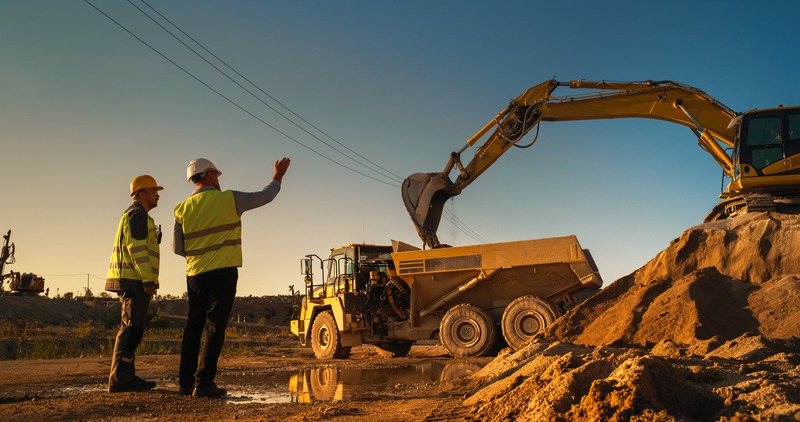Handling heavy equipment often involves unique challenges and risks that require specialized knowledge and preparation. Ensuring that these tasks are carried out safely is paramount, as safety protocols not only protect the workforce but also ensure operational efficiency. Let’s explore some of the most effective best practices to minimize risks in heavy equipment lifting. In our journey, we’ll focus on key areas such as planning, training, equipment maintenance, and communication.
Planning for Safe Lifting Operations
All successful heavy equipment lifting begins with meticulous planning. This is the stage where potential risks are identified, and strategies are built to mitigate them. Consider creating a detailed lifting plan that include the followings:
-
Load Characteristics: Analyze the weight, dimensions, and center of gravity of the load.
-
Equipment Selection: Choose the right lifting equipment based on the load requirements.
-
Site Assessment: Evaluate the ground conditions and any potential obstacles.
-
Weather Conditions: Assess the weather forecast to avoid lifting during adverse conditions.
-
Permits and Regulations: Ensure compliance with local regulations and secure necessary permits.
By addressing these factors before the lift, you can enhance safety and efficiency significantly.
The Role of Training in Safety
No amount of planning can replace the necessity for proper training. Workers should receive comprehensive training on the specific machinery they will be operating, as well as general safety guidelines. Training should cover:
-
Equipment Operation: Understanding the controls and functions of all lifting equipment.
-
Safety Protocols: Familiarizing workers with emergency procedures and risk mitigation techniques.
-
Load Handling: Techniques for securing, lifting, and maneuvering different types of loads.
-
Personal Protective Equipment (PPE): Importance and use of PPE in lifting operations.
Well-trained operators are more likely to anticipate problems and act promptly, reducing the risk of accidents.
Inspecting and Maintaining Equipment Regularly
Equipment maintenance is a critical component in minimizing risks. Regular inspections and maintenance ensure that all machinery is operating correctly. Focus on:
-
Pre-Operation Inspections: Conduct checks before each use to identify any immediate issues.
-
Scheduled Maintenance: Adhere to the manufacturer-recommended maintenance schedule.
-
Replacement of Worn Parts: Replace worn parts immediately to avoid malfunctions.
-
Documenting Maintenance Activities: Keep detailed records of inspections and maintenance work.
Consistent maintenance helps prevent unexpected equipment failures, which can lead to hazardous situations.
Effective Communication on the Job Site
Clear and reliable communication is indispensable during lifting operations. It ensures everyone involved in the process is on the same page. Consider the following communication strategies:
-
Designate a Signal Person: Use a dedicated signal person to communicate instructions to the equipment operator.
-
Establish Clear Signals: Use standardized hand signals or radios for seamless communication.
-
Pre-Lift Meetings: Conduct meetings to discuss the plan, roles, and safety measures before lifting.
-
Use of Technology: Deploy modern communication tools, such as headsets, for real-time conversations.
Good communication reduces misunderstandings and errors during lifting operations.
Understanding the Importance of Load Stability
Maintaining load stability during lifting is paramount. An unstable load can become a serious hazard. To promote stability:
-
Proper Load Securing: Use appropriate rigging and securing techniques based on load characteristics.
-
Correct Lifting Angles: Ensure optimal lifting angles to minimize stress on the rigging and load.
-
Equipment Calibration: Regularly calibrate and adjust lifting machinery to handle loads evenly.
Attention to these details keeps the load stable and reduces the likelihood of accidents.
Evaluating Environmental Conditions
The environment where lifting occurs can greatly impact safety. Conduct thorough assessments that include:
-
Weather Monitoring: Be aware of weather changes that might introduce risks.
-
Site Condition Evaluation: Check for uneven surfaces, debris, or other hazards in the lift area.
-
Lighting and Visibility: Ensure adequate lighting for night lifts and clear visibility for all workers.
By anticipating and addressing environmental challenges, you can maintain safe lifting operations.
Utilizing the Right Tools and Technology
Leveraging advanced tools and technology can improve safety and efficiency. Consider technologies such as:
-
Load Monitoring Systems: Use these to track weight distribution and stress points in real-time.
-
Automated Safety Systems: Invest in equipment with built-in safety sensors and warnings.
-
Training Simulators: Employ these to provide realistic training experiences without risk.
Incorporating the right technology allows for more control and insight during lifting tasks. In complex lifting scenarios, collaboration with experienced industrial rigging services can provide the added guidance and expertise necessary for safely handling difficult loads.
Choosing the Appropriate Lifting Equipment
Selecting the correct lifting equipment is crucial to safe operations. Carefully match the equipment to the task based on:
-
Load Requirements: Capacity, shape, and material of the load to determine equipment needs.
-
Site Conditions: Adaptability of equipment to fit within the work site’s constraints.
-
Task Specificity: Equipment designed for specific jobs, such as mobile cranes or tower cranes.
Picking the right machinery is key to maintaining safety and efficiency on the job site. Utilizing professional heavy equipment lifting services ensures that the chosen equipment is operated by highly skilled personnel, thereby maximizing safety and productivity.
Regular Safety Audits and Updates
Regularly reviewing safety protocols is key to adapting to new challenges and technologies. Implement the following:
-
Periodic Safety Audits: Conduct regular checks of procedures, equipment, and protocols.
-
Review and Update Training: Continually update training programs to align with current safety standards.
-
Documentation and Reporting: Keep detailed records of safety audits and incident reports to identify trends.
A commitment to ongoing safety improvement ensures operations remain cutting-edge. Partnering with expert crane installation services enhances your safety strategy by integrating advanced installation techniques with best-practice safety measures.
Final Thoughts
Minimizing risks in heavy equipment lifting is a complex but essential task that requires a proactive strategy focused on planning, training, maintenance, and communication. By investing time and resources into these areas, you ensure a safer working environment and protect the valuable human and material resources within your operation. Keep these practices at the forefront of your operations, and you will effectively reduce risks associated with heavy equipment lifting.




